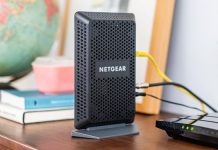Most homeowners have heard of heat recovery ventilation systems. They’ve become standard in new construction thanks to the energy savings they provide while improving indoor air quality. That’s essential given that the average new home is twice as airtight as a home built in 2000. However, MVHR systems are not a one size fits all solution, and there are many times that you have to keep in mind before thinking of installing one in your home. Here are four things you should consider before getting a heat recovery home ventilation system.

The Suitability of Your Building for Heat Recovery Systems
Mechanical ventilation with heat recovery or MVHR system is an excellent way to reduce energy usage without sacrificing air quality. These systems will capture heat from outgoing air while transferring it to incoming air, and can also help maintain a constant humidity level in the home.
However, this is only possible if the home is tightly sealed. An older home with a lot of little air leaks won’t see the promised benefits of MVHR systems. If you constantly leave doors and windows open, you won’t see the expected energy savings, either. This is why the best time to install an MVHR system is when you’re building a new home, while modern homes can often be retrofitted to include it. Always discuss the project with an expert because you don’t want to install it if it cannot meet building regulations.
The Cost-Benefit Ratio of MVHR Systems
The cost of installing mechanical ventilation with heat recovery systems depends on the age and size of the home. If you can run straight ducts through the loft or build it into the walls of the home, the total cost of installation and operation is lower than if your building contractor has to cut holes in stone walls and weave ducts around wood beams.
Another factor to consider is the cost of the system, which will be proportional to the size of the distribution network. That’s why you’ll pay a lot more for an MVHR system installed in a large or multi-story home than a smaller one.
You can improve the ROI on the MVHR system by finding equipment that has the best overall value. Suppliers like BPC Ventilation, for instance, can help you design an HVAC system that’s far more efficient and smarter than your current one. Or they can keep your home at the same temperature throughout by installing duct-mounted heating and cooling systems, allowing you to keep a hot kitchen or cold converted basement comfortable without altering the thermostat settings for the rest of the house.
The Maintenance Requirements
MVHR systems require relatively little maintenance. However, you do need to change the filters. If you’re a landlord, your tenants will need to change the filters often to see the high air quality and low heating and cooling bills that typically come with MVHR systems.
Furthermore, the systems come with controls that can adjust both the temperature set on the thermostat and the air change rate of the MVHR system. If people set the air flow rate too low, their homes may become stuffy, and if the rate is too high, they might damage it. So, it’s important that you go over the controls with any tenant to make sure that they use them properly.
Mechanical ventilation with heat recovery can reduce home heating costs by up to a third while improving indoor air quality. However, you need to understand the risks, costs, and benefits to make the right decision for your household.





































